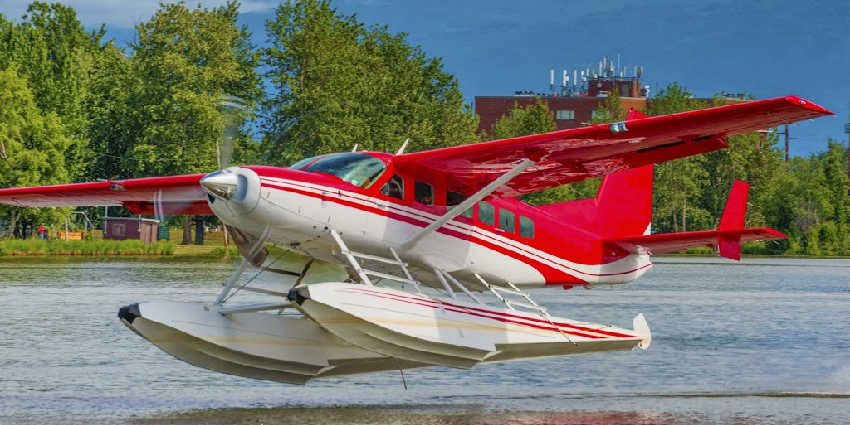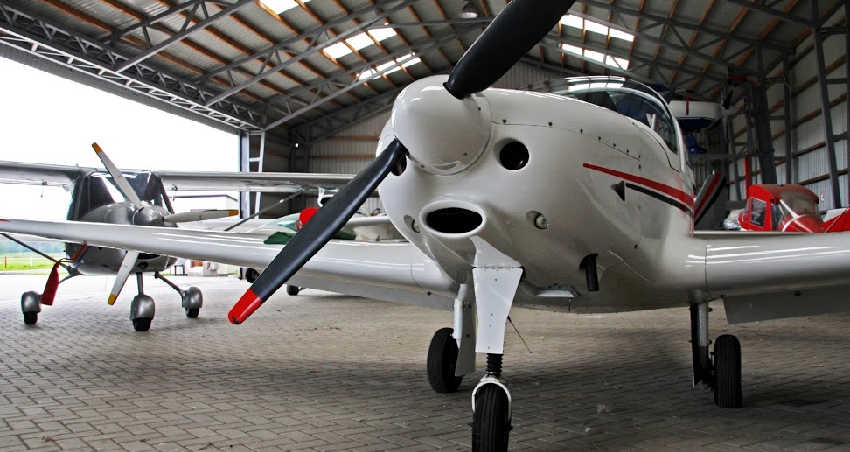




Love to Fly?Begin a Career
in Aviation Today!
A Complete Directory of Flight Schools • Aviation Jobs •
Flight Training
Select your criteria below
We'll find matching schools!
Or go to our Directory of Schools
Discover the world's
BEST places to launch
your commercial
AVIATION CAREER
Airplane & Helicopter Flight Training Schools
Our mission is to provide vital information about the best aviation schools and flight training programs in the United States. We cater to career-minded individuals who love aviation. We are here to serve those who have always dreamed of flying airplanes or helicopters as a commercial pilot.
Aviation Schools Online has Best Flight Schools
We invite all fixed-wing and helicopter flight schools throughout the U.S. to include their school information to our directory. The goal is to assist our visitors in their search for the best flight school nearest them – making the desire to enroll in a flight school easier, quicker, and more affordable.
Want an Aviation Career? Get an Aviation Degree
Our website exists to provide the best and most up-to-date information for student pilots to know the best flight training options. Here, you will come to understand the enrollment and funding processes; and learn from others who are working successfully to accomplish their aviation careers.
For more information about flight schools, training and aviation jobs,
request a call from an Aviation Schools Online representative.Request a Call
Explore Aviation Schools
and
Flight Training Options

Pilot Training Programs
Fly as an aviation career path – or fly as a personal hobby... either way, you're gonna have fun!
It is arguably one of the best times ever for a student pilot training and learning to fly. The Air Line Pilots Association (ALPA) estimates that global aviation traffic will triple between now (2024) and the year 2035. What's more... if you're willing to work abroad, there's a substantial increase in available aviation jobs for pilots.
With ASO's complete directory of flight schools, you can search, find, and contact over 1,800 flight training programs and locations. Each listed by country, state, and city.
Dig a little deeper into our directory of aviation schools and you'll find ASO has connections to help you finance your pilot school! Also, get information on how much flight schools cost, how to choose the best flight training scholarships, and what the current aviation job market looks like for pilots.
Currently, the "fast facts" for an aviation career as a commercial pilot are:
- Median salary: $92,060 per year
- Minimum education: Associate's Degree (sometimes a Bachelor's is required)
- Job outlook: 11% growth through 2020
Next step is to find the desired flight training program that will support your goals; and your career as a pilot.

Airplane & Helicopter Flight Schools
Certified Flight Instructor Schools: Due to the current pilot hiring boom there is a growing need for more qualified flight instructors to help educate the next generation of pilots.
A&P Aircraft Mechanic School: FAA licensed aviation maintenance technicians (A&P) are in high demand and are needed by a variety of industries including major and regional airline operations, corporate fleet maintenance, helicopter operations, and general aviation.
VA-Approved Aviation Schools: Today's U.S. Department of Veterans Affairs (VA) educational benefits have never been better. Whether you qualify for the Post-9/11 GI Bill, Montgomery GI Bill, or other programs, chances are, you can use your benefits to help make your aviation career goals a reality.
Aircraft Mechanic School: Unlike many other types of aviation schools, aircraft mechanic schools are much harder to find because these operations must meet strict Federal Aviation Administration (FAA) certification. Currently, less than 180 schools are operating today.
GI Bill is a registered trademark of the U.S. Department of Veterans Affairs (VA). More information about education benefits offered by VA is available at the official U.S. Department of Vetran Affairs website.

Aviation Careers & Training
Airport & Aviation Management Schools: Aviation Management is a rapidly expanding field and some of these schools offer both online programs as well as traditional classroom programs. Many types of operations including aviation maintenance, airport operations, and even local administration of airports.
Flight Instructor Jobs: To meet the demand, flight schools are hiring a lot of flight instructors. Whether you're looking for CFI, CFII, or MEI employment, we're here to match you with the best flight instructor jobs available.
Flight Dispatcher Jobs: As a flight dispatcher, you will prepare flight plans, weather briefings, flight routes, weight & balance calculations, and fuel requirements for most of today's large aircraft and fleet operations.
Drone, UAS, and UAV Pilot Training: Demand for highly trained UAV pilots, sensor operators, and mechanics is increasing rapidly as new ways to use unmanned aircraft systems continue to be explored.
Air Traffic Controller Training: As an air traffic controller, you’ll be primarily responsible for maintaining separation between and guiding aircraft to and from airports. Demand is strong for these highly trained and well-paid positions. Air traffic controller training starts with a four-year degree.

Pilot Training Programs
Fly as an aviation career path – or fly as a personal hobby... either way, you're gonna have fun!
It is arguably one of the best times ever for a student pilot training and learning to fly. The Air Line Pilots Association (ALPA) estimates that global aviation traffic will triple between now (2024) and the year 2035. What's more... if you're willing to work abroad, there's a substantial increase in available aviation jobs for pilots.
With ASO's complete directory of flight schools, you can search, find, and contact over 1,800 flight training programs and locations. Each listed by country, state, and city.
Dig a little deeper into our directory of aviation schools and you'll find ASO has connections to help you finance your pilot school! Also, get information on how much flight schools cost, how to choose the best flight training scholarships, and what the current aviation job market looks like for pilots.
Currently, the "fast facts" for an aviation career as a commercial pilot are:
- Median salary: $92,060 per year
- Minimum education: Associate's Degree (sometimes a Bachelor's is required)
- Job outlook: 11% growth through 2020
Next step is to find the desired flight training program that will support your goals; and your career as a pilot.

Airplane & Helicopter Flight Schools
Certified Flight Instructor Schools: Due to the current pilot hiring boom there is a growing need for more qualified flight instructors to help educate the next generation of pilots.
A&P Aircraft Mechanic School: FAA licensed aviation maintenance technicians (A&P) are in high demand and are needed by a variety of industries including major and regional airline operations, corporate fleet maintenance, helicopter operations, and general aviation.
VA-Approved Aviation Schools: Today's U.S. Department of Veterans Affairs (VA) educational benefits have never been better. Whether you qualify for the Post-9/11 GI Bill, Montgomery GI Bill, or other programs, chances are, you can use your benefits to help make your aviation career goals a reality.
Aircraft Mechanic School: Unlike many other types of aviation schools, aircraft mechanic schools are much harder to find because these operations must meet strict Federal Aviation Administration (FAA) certification. Currently, less than 180 schools are operating today.
GI Bill is a registered trademark of the U.S. Department of Veterans Affairs (VA). More information about education benefits offered by VA is available at the official U.S. Department of Vetran Affairs website.

Aviation Careers & Training
Airport & Aviation Management Schools: Aviation Management is a rapidly expanding field and some of these schools offer both online programs as well as traditional classroom programs. Many types of operations including aviation maintenance, airport operations, and even local administration of airports.
Flight Instructor Jobs: To meet the demand, flight schools are hiring a lot of flight instructors. Whether you're looking for CFI, CFII, or MEI employment, we're here to match you with the best flight instructor jobs available.
Flight Dispatcher Jobs: As a flight dispatcher, you will prepare flight plans, weather briefings, flight routes, weight & balance calculations, and fuel requirements for most of today's large aircraft and fleet operations.
Drone, UAS, and UAV Pilot Training: Demand for highly trained UAV pilots, sensor operators, and mechanics is increasing rapidly as new ways to use unmanned aircraft systems continue to be explored.
Air Traffic Controller Training: As an air traffic controller, you’ll be primarily responsible for maintaining separation between and guiding aircraft to and from airports. Demand is strong for these highly trained and well-paid positions. Air traffic controller training starts with a four-year degree.
Advanced Flight Training
for Career Pilots
There has never been a better time to get into the aviation industry (airplane or helicopter) as a commercial pilot. Global demand for fixed-wing and helicopter pilots is at an all-time high!
While at the same time, it has never been more difficult to obtain a commercial pilot license and certification. Flight training requirements are increasing as the cost of flight training continues to rise.
Here at Aviation Schools Online, you have immediate access to the top fixed-wing and helicopter flight schools from across the nation.
- IFR Training
- After earning your private or commercial license, the next step for you is the instrument rating (IFR), which allows you to fly in the clouds or takeoff in less VFR weather. If you are interested in flying for a living, you'll need your instrument rating. Most pilots will tell you it's the toughest rating you'll ever earn.
- Multi-Engine Training
- Ready to move up to a twin-engine? Start by finding a Multi-Engine Rating school. Multi ratings require about 8 hours of dual instruction and a check ride from a designated FAA examiner. Most schools require a Private Pilot or Commercial Pilot certificate to begin training, and you'll need a current medical too.
- Seaplane Rating Schools
- A seaplane rating course combines many of your previous skills like stick & rudder work, tailwheel experience, boating knowledge, and of course local conditions for the air work. Whether you want to fly straight floats, amphibs, or a flying boat, these schools can prepare you for your FAA seaplane rating check ride.
- Time Building Courses
- Employers usually hire pilots with high total flight time, and multi-engine time building is the holy grail for aspiring commercial or airline pilots. If you want to fly as a career you'll need to build as much multi-engine time as possible. Find out how these programs can save you money and time.
- Type Rating Training
- Aircraft with gross takeoff weights above 12,000 and all jet aircraft require a Type Rating. Students needing a type rating can expect to attend specialized type rating training using flight simulators or the actual aircraft.
- Jet Transition Training
- Applicants for regional airline or corporate pilot jobs will have an advantage over their counterparts if they've completed jet transition training. Jet transition courses are only offered at a few schools. In addition, many pilots will need to complete helicopter turbine transition training to move up.
- Sports Pilot Training
- Yeah, we know your type. You can't help but to look up when you hear a plane fly over. So quit wishing and start flying. The Sports Pilot License allows a pilot to fly for fun in modern efficient single-engine aircraft without an FAA medical for about half the cost of traditional training.
For more information about flight schools, training and aviation jobs,
request a call from an Aviation Schools Online representative.Request a Call
Select your criteria below
We'll find matching schools!
Or go to our Directory of Schools
See what they're saying about us!
Trending Aviation News
View our Trending Aviation News blog.


